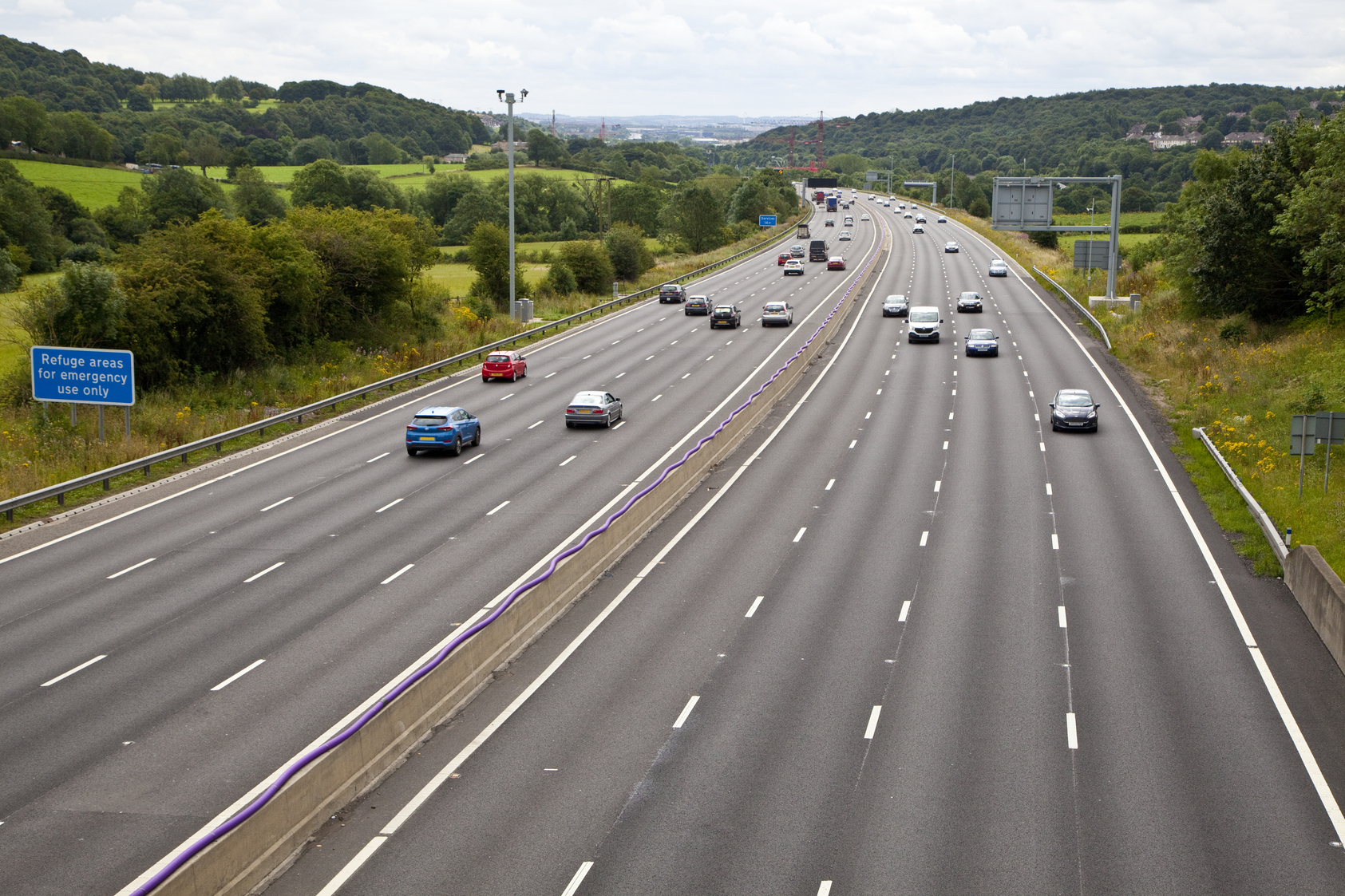Nearly a quarter of drivers in the UK believe smart motorways are unsafe, and many do not understand the rules around hard shoulder running, according to recent research by Kwik Fit.
More than half of the motorists surveyed avoid driving in the hard shoulder on smart motorways, due to confusion about when it can be used as an active traffic lane.
What is a smart motorway?
Smart motorways were developed as a means of reducing congestion, managing traffic and maximising motorway capacity, and have been on the increase since the first smart motorway stretch of the M42 opened in 2006.
There are three types of smart motorway[1]:
- Dynamic hard shoulder: where the hard shoulder is temporarily opened up to traffic
- All lane running: where the full width of the road is usable with emergency refuge areas alongside
- Controlled motorway: with three or more lanes, a hard shoulder and variable speed limits
Smart motorways include overhead electronic signs that display variable speed limits, lane closures, and may convey messages about accident reports or other traffic-related news.
Hard shoulder use
Kwik Fit’s research showed that ‘all lane running’ is mostly misunderstood by drivers, with 56% avoiding using the hard shoulder on a smart motorway even when it’s open for use to reduce congestion.
Only a third of the drivers surveyed could correctly identify which smart motorway sign indicated an open hard shoulder. 15% believed a blank sign above the hard shoulder means it’s open to traffic, when in fact this indicates that normal motorway rules apply and it is only available as a hard shoulder. Blank signs above other lanes indicate normal conditions, i.e. national speed limits.
Earlier this year, RAC research reported that a fifth of drivers put their lives at risk[2] by ignoring ‘red X’ signs on smart motorways. It’s illegal to drive in a lane closed by a red X sign, and drivers risk a fixed penalty of up to £100 and three points on their licence1.
Are smart motorways a danger?
Following Kwik Fit’s research Highways England’s chief highways engineer Mike Wilson, speaking to The Sunday Times Driving, said, “Motorways in this country are among the very safest roads in the world. Highways England would never carry out a major improvement scheme without being confident that we would maintain or enhance this position. Evidence indicates that smart motorways are helping to improve safety. The first nine of the latest generation of smart motorways have reduced casualty rates by more than 25 per cent.” [5] He added that Highways England continues to monitor the safety performance of smart motorways, and is rolling out enhancements to improve the driver experience.
Safety for roadside rescue and recovery workers
Highways England recently announced a new course for workers in the roadside rescue and recovery industry, which aims to help them carry out their roles safely.
The course, Smart Motorways Awareness for the Roadside Rescue & Recovery Industry, will give guidance on safe working practices when attending breakdowns or collisions on smart motorways.
Some of the key safety principles include that vehicle recover operators are never expected to recover a vehicle in a live lane on a smart motorway, and advises that Highways England can close lanes and set speed limits to support recovery operators.
Enforceable speed limit changes
It’s worth noting that speed reductions on smart motorways are enforceable by law, and motorists caught exceeding the variable speed limits can be issued with a fine[6].
Variable speed limits on smart motorways are designed to manage the flow of traffic more efficiently and safely, and are often put in place due to accidents, or an increased risk of accidents due to traffic volumes.
A speed limit displayed inside a red circle is legally enforceable; once it no longer applies, overhead displays will show the national speed limit sign, and if no speed limit is displayed at all then the national speed limit applies.
Speed cameras in operation on smart motorways can still catch drivers exceeding the national speed limit even when no variable limits are in place – drivers should be aware that if they break the law they are open to harsher punishments since the speeding sentencing structure was revised in April 2017[7].
Despite the advanced systems in place, accidents still occur on smart motorways, often due to sudden speed changes, distracted driving, or misinterpretation of displayed limits.
While these intelligent traffic systems aim to reduce collisions, they also introduce a new layer of complexity for motorists, who must remain vigilant and responsive to changing conditions.
In cases where accidents do happen—whether caused by driver error, unclear signage, or systemic flaws—legal representation becomes essential. Gammill Law offers critical support in such situations, helping accident victims understand their rights, pursue just compensation, and navigate the intricacies of liability on modern roadways.
Their experience with complex traffic and personal injury cases ensures that injured parties are not left to manage the aftermath alone, especially when facing the nuances of smart motorway incidents.
Using smart motorways: more resources
Several organisations have produced guidance information for drivers on how to correctly use smart motorways; we have included links to some of these below.
It’s worth sharing smart motorway guidance with your employees, if you employ people who drive vehicles are part of their work with you, especially if you run a commercial fleet, to ensure safety and avoid fines.
Kwik Fit’s guide to smart motorways
How to drive safely and legal on England’s smart motorways: gov.uk advice
RAC: how to use smart motorways https://www.youtube.com/watch?v=ANmoyaDsr28&feature=youtu.be
Safety is a priority for any driver, and when your business is about cars, it’s even more so. Make sure your motor trade business is protected with the right insurance.
Can we help you with your motor trade, road risk and business insurance? Get in touch and we’ll call you back.
|
|
References
[1] Gov.uk/guidance/how-to-drive-on-a-smart-motorway
[2] https://www.rac.co.uk/drive/news/motoring-news/fifth-of-drivers-ignore-smart-motorway-red-x/
[3] https://www.bbc.co.uk/news/uk-england-south-yorkshire-49567968
[4] Daily Mail, 21st September 2019
[5] James Allen, driving.co.uk, 18 September 2019
[6] https://www.gov.uk/guidance/how-to-drive-on-a-smart-motorway#variable-speed-limits
[7] https://www.rac.co.uk/drive/advice/legal/speeding-fines/





